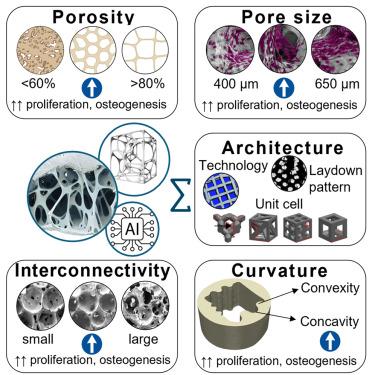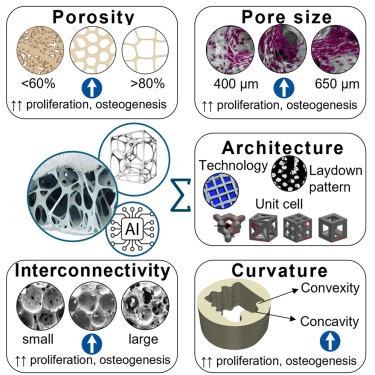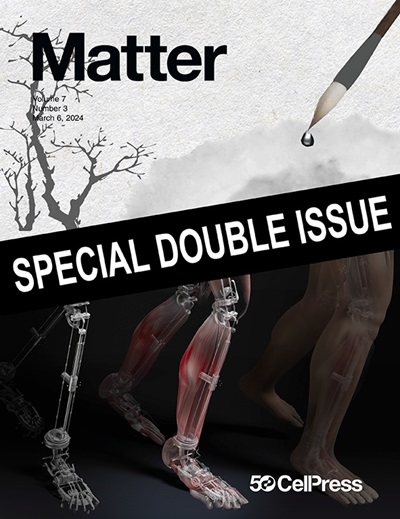骨组织工程的结构影响:综述与展望
IF 17.5
1区 材料科学
Q1 MATERIALS SCIENCE, MULTIDISCIPLINARY
引用次数: 0
摘要
骨组织工程(BTE)为临界尺寸骨缺陷提供了一种变革性的解决方案,但优化支架几何形状仍然是一个重大挑战。受骨的自然结构的启发,本研究探索了五个关键的几何参数——孔隙率、孔径、孔隙结构、互联性和渗透率以及曲率——并阐明了它们对支架性能的影响。大约70%的孔隙率,中等大小的孔隙(~ 400-650 μm),高互连性和凹表面成为骨再生最有前途的特征,而最佳孔隙结构仍然是神秘的。在这些参数相互依赖所定义的复杂设计空间中,人工智能(AI)被提出作为加速脚手架设计过程的工具。通过批判性地评估支架几何的含义,这项工作揭示了当前的研究差距,并为未来的研究奠定了坚实的基础。将实验结果与人工智能驱动的见解相结合,为设计更有效和临床应用的BTE支架铺平了道路。本文章由计算机程序翻译,如有差异,请以英文原文为准。


Structural influences on bone tissue engineering: A review and perspective
Bone tissue engineering (BTE) presents a transformative solution for critical-sized bone defects, yet optimizing scaffold geometry remains a significant challenge. Inspired by the natural structure of bone, this work explores five pivotal geometrical parameters—porosity, pore size, pore architecture, interconnectivity and permeability, and curvature—and elucidates their impact on scaffold performance. Approximately 70% porosity, mid-sized pores (∼400–650 μm), high interconnectivity, and concave surfaces emerge as the most promising features for bone regeneration, while optimal pore architecture remains cryptic. In the intricate design space defined by the interdependence of these parameters, artificial intelligence (AI) is proposed as a tool to accelerate the scaffold design process. By critically evaluating the implications of scaffold geometry, this work sheds light on current research gaps and lays a strong foundation for future studies. Integrating experimental findings with AI-driven insights, it paves the way for the design of more effective and clinically applicable BTE scaffolds.
求助全文
通过发布文献求助,成功后即可免费获取论文全文。
去求助
来源期刊

Matter
MATERIALS SCIENCE, MULTIDISCIPLINARY-
CiteScore
26.30
自引率
2.60%
发文量
367
期刊介绍:
Matter, a monthly journal affiliated with Cell, spans the broad field of materials science from nano to macro levels,covering fundamentals to applications. Embracing groundbreaking technologies,it includes full-length research articles,reviews, perspectives,previews, opinions, personnel stories, and general editorial content.
Matter aims to be the primary resource for researchers in academia and industry, inspiring the next generation of materials scientists.
 求助内容:
求助内容: 应助结果提醒方式:
应助结果提醒方式:


